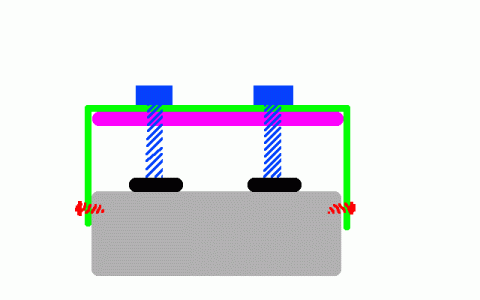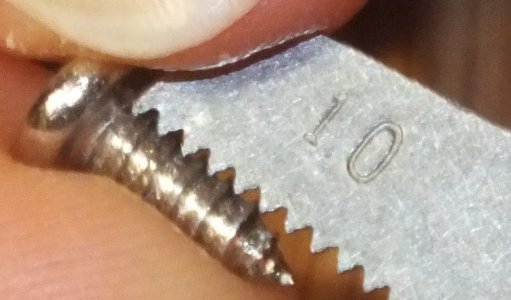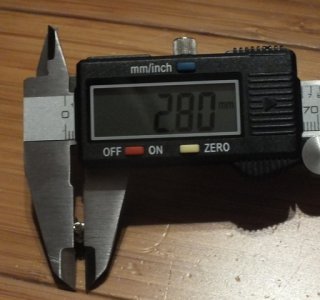- Joined
- Feb 25, 2023
- Messages
- 36
Hello,
Obligatory intro follows:
In asking this question I know I could go out, read several books, and eventually understand how to do this; but I'm working on project so I needed deal with this sooner rather than later. I'll happily read those books at a later date. I also searched online, but the websites I found don't agree with each other on the math and even admit that they're over simplifying the matter. Likewise, I could buy Solidworks, or something, but I'd rather learn the trade than learn the app.
I'm trying to create a fixture to hold parts down. They are between ~10 and ~20 square mm in size and almost perfect rectangles. I'm uncertain whether I should be using M6 or M8 bolts or maybe something else, like my head . I don't even know if my fixture can withstand the force I wish to place on it, which would be 40in-lbs of tightening force on each of the 2 bolts.
. I don't even know if my fixture can withstand the force I wish to place on it, which would be 40in-lbs of tightening force on each of the 2 bolts.
I've attached a picture of the setup. The silver part is the base. It's made of aluminum and is almost exactly 40mm x 20mm. I can't change anything on the base at all for any reason. It takes two M3 1mm pitch screws that penetrate 8mm deep into the base on each side (4 total) (They're considered coarse threads normally used for wood). I'm planning on using a piece of scrap stainless for the green part to wrap around the base. I think it will be about 1-2mm thick, I have to look. The black things are the parts, of course. The blue screws I think will be M6 1mm pitch (which is considered fine pitch). The purple part is a piece of scrap steel used for giving the bolts something to grip to and is 3.4mm in thickness.
Feel free to give me formulas instead of just doing the work for me. I'm not trying to be lazy, I just don't know how to do this.
How do I calculate if the rig can withstand 40in-lbs of torque on each of those blue bolts?
How much force would be applied to each part exactly? I know how to do PSI and convert mm->inches, but there has to be some loss when tightening a screw.
Does the purple plate have enough depth to allow an M6 bolt to grip properly? I have no idea how deep a nut should be.
Should I be using a larger bolt than M6? I could go as high as M10.
Thanks!
Obligatory intro follows:
In asking this question I know I could go out, read several books, and eventually understand how to do this; but I'm working on project so I needed deal with this sooner rather than later. I'll happily read those books at a later date. I also searched online, but the websites I found don't agree with each other on the math and even admit that they're over simplifying the matter. Likewise, I could buy Solidworks, or something, but I'd rather learn the trade than learn the app.
I'm trying to create a fixture to hold parts down. They are between ~10 and ~20 square mm in size and almost perfect rectangles. I'm uncertain whether I should be using M6 or M8 bolts or maybe something else, like my head
I've attached a picture of the setup. The silver part is the base. It's made of aluminum and is almost exactly 40mm x 20mm. I can't change anything on the base at all for any reason. It takes two M3 1mm pitch screws that penetrate 8mm deep into the base on each side (4 total) (They're considered coarse threads normally used for wood). I'm planning on using a piece of scrap stainless for the green part to wrap around the base. I think it will be about 1-2mm thick, I have to look. The black things are the parts, of course. The blue screws I think will be M6 1mm pitch (which is considered fine pitch). The purple part is a piece of scrap steel used for giving the bolts something to grip to and is 3.4mm in thickness.
Feel free to give me formulas instead of just doing the work for me. I'm not trying to be lazy, I just don't know how to do this.
How do I calculate if the rig can withstand 40in-lbs of torque on each of those blue bolts?
How much force would be applied to each part exactly? I know how to do PSI and convert mm->inches, but there has to be some loss when tightening a screw.
Does the purple plate have enough depth to allow an M6 bolt to grip properly? I have no idea how deep a nut should be.
Should I be using a larger bolt than M6? I could go as high as M10.
Thanks!




